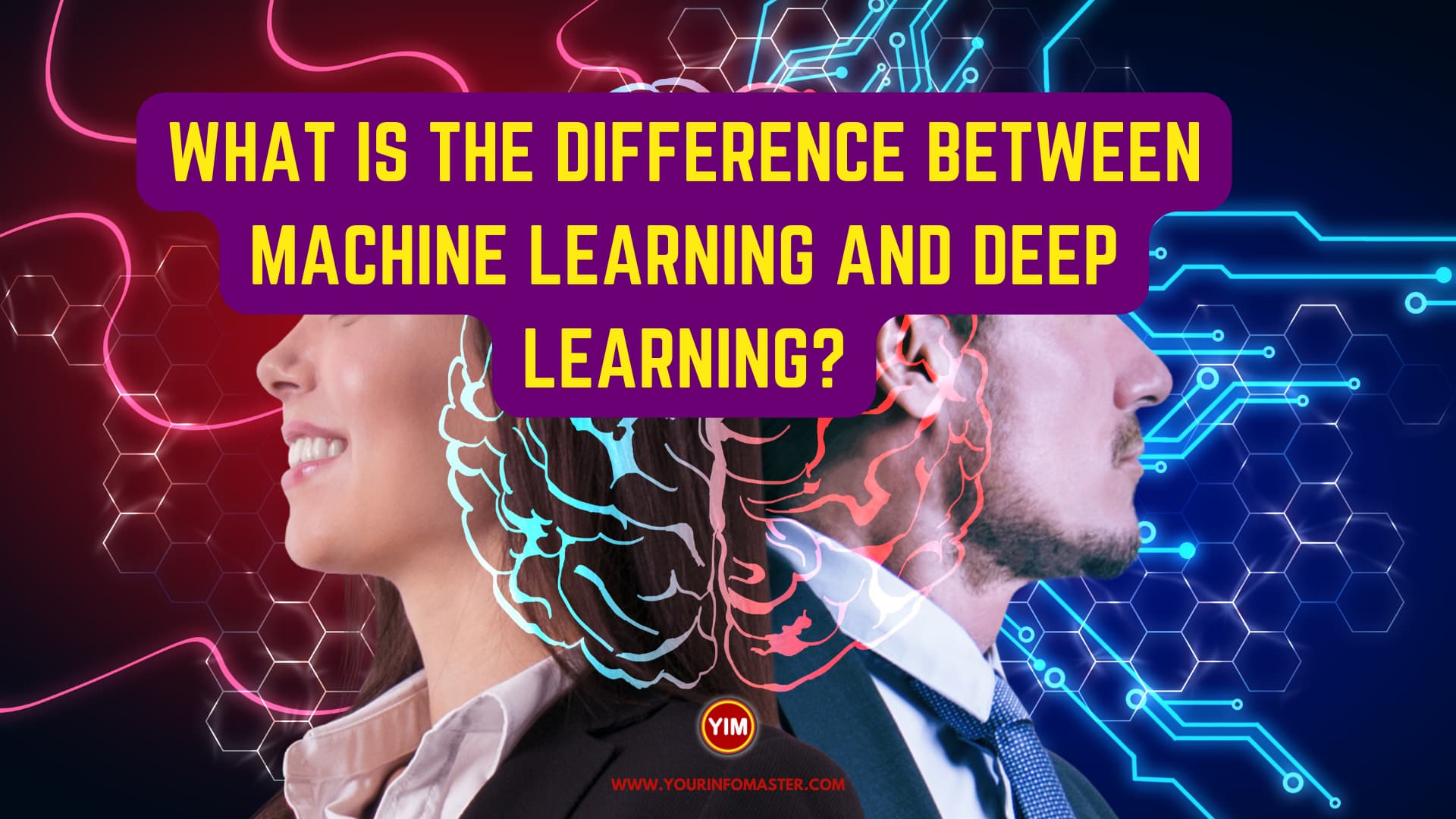I am going to explain the blog post “What is the difference between Machine learning and Deep learning?“
What is the difference between Machine learning and Deep learning? This question often arises when discussing artificial intelligence (AI) technologies. Machine learning and Deep learning are two branches of AI that share similarities but have distinct characteristics.
Understanding these disparities is crucial in harnessing the power of AI effectively. In this blog post, we will delve into the five key differences between Machine learning and Deep learning, shedding light on their unique features and applications.
Check also: What is the difference between colitis and ulcerative colitis?
5 Differences Between Machine Learning and Deep Learning
Here is a list of 5 differences between Machine learning and Deep learning:
- Data Representation and Feature Extraction
- Complexity and Model Structure
- Level of Human Intervention
- Domain Expertise Requirement
- Resource Utilization and Scalability
Check also: What is the difference between Depression and Clinical Depression?
Detail of 5 Differences between Machine Learning and Deep Learning
Here is the detail of 5 differences between Machine learning and Deep learning:
Data Representation and Feature Extraction
Machine learning algorithms primarily rely on manually engineered features extracted from the input data. These features serve as the basis for making predictions or classifications. In contrast, deep learning algorithms automatically learn features from the raw data itself, eliminating the need for explicit feature engineering. Deep learning models leverage artificial neural networks with multiple layers to perform feature extraction and representation automatically.
Complexity and Model Structure
Machine learning models often involve simpler algorithms that require less computational power and memory. These models are generally interpretable, allowing humans to understand and analyze the decision-making process. On the other hand, deep learning models are more complex, consisting of numerous interconnected layers of artificial neurons. The high complexity enables deep learning models to learn intricate patterns and representations from vast amounts of data, making them suitable for handling complex tasks like image recognition and natural language processing.
Level of Human Intervention
Machine learning algorithms typically require significant human intervention in the form of feature engineering, selecting appropriate algorithms, and tuning hyperparameters. These interventions rely on domain knowledge and expertise. In contrast, deep learning algorithms minimize human intervention by automatically learning and extracting features, reducing the need for manual intervention. Deep learning models can autonomously discover complex patterns, making them more adaptable to different domains and reducing the dependence on domain expertise.
Domain Expertise Requirement
Machine learning models often rely heavily on domain expertise to engineer meaningful features, select relevant algorithms, and fine-tune the models. This domain-specific knowledge plays a crucial role in achieving optimal performance. Deep learning models, on the other hand, can leverage large amounts of unlabeled data to learn complex representations. This characteristic makes deep learning models more flexible and less dependent on domain expertise, enabling them to generalize better across different domains.
Resource Utilization and Scalability
Machine learning algorithms typically require fewer computational resources and can run efficiently on standard hardware. These algorithms are suitable for applications with limited computational power and memory, making them accessible to a wider range of devices. In contrast, deep learning algorithms demand substantial computational resources, including high-performance GPUs or specialized hardware, due to their complex model structures and large-scale training requirements. Deep learning models excel in scenarios where immense computing power is available, enabling them to process massive datasets and tackle highly complex problems.
Check also: What is the difference between Aleve and Advil?
Conclusion
In conclusion, the distinction between Machine learning and Deep learning lies in their approaches to data representation, complexity, human intervention, domain expertise requirement, and resource utilization. By understanding these differences, practitioners can choose the most appropriate technique for their AI applications. Both Machine learning and Deep learning have their unique strengths and applications, contributing to the advancement of AI and its diverse fields of implementation.
See also: What is the difference between i5 and i7 Processor?
If you really enjoyed the article “What is the difference between Machine learning and Deep learning?,” then I would be very grateful if you’d help it spread by emailing it to your friends or sharing it on Twitter, Instagram, or Facebook. Thank you!
Have you read “What is the difference between Machine learning and Deep learning?“ Which of these blogs are you reading, and how is it similar to one of them?
Read More
- What is the difference between Amazon Prime and Prime Video?
- What is the difference between Augmented Reality and Virtual Reality?
- What is the difference between Cholesterol and Triglycerides?
- What is the difference between Subsidized and Unsubsidized Student Loans?
- What is the difference between wordpress.com and wordpress.org?







